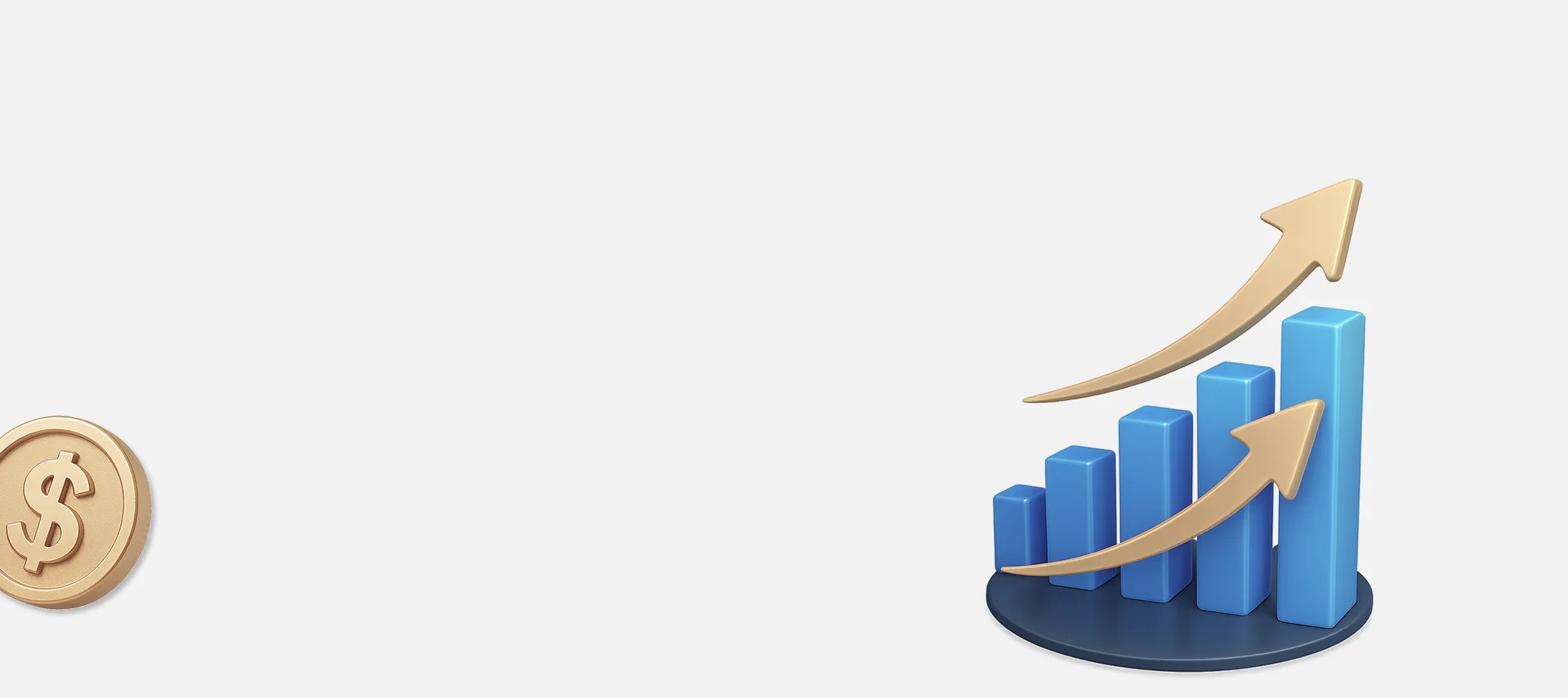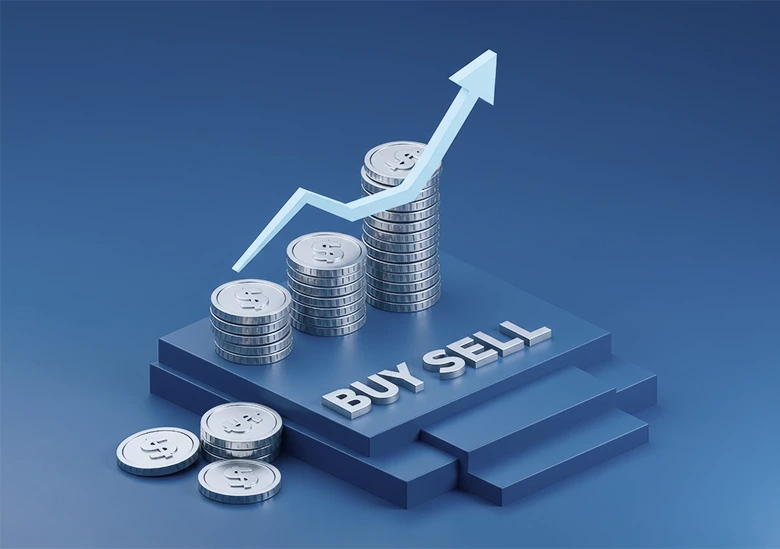

What is Margin Trading?
Margin trading is a form of trading where investors borrow money from a broker to increase their buying power and potentially amplify their returns. It involves using a margin account, where the investor deposits a percentage of the total trade value as collateral, and the broker lends the remaining amount. While margin trading can lead to higher profits, it also significantly increases the risk of losses, as both gains and losses are magnified.
Key Takeaways:
- Margin trading lets you borrow from a broker to control a larger position than your cash allows, which magnifies both potential gains and losses and can trigger margin calls if equity falls below a certain level.
- Trading on margin increases market exposure, enables short selling, and supports diversification across assets, helping capture more opportunities while requiring disciplined position sizing.
- Key risks for trading on margin include amplified losses from leverage, interest costs and fees that erode returns, and margin calls that can force liquidation when account equity drops below maintenance levels.
- Effective risk management uses clear goals, pre-trade analysis, stop-loss or trailing stops, and active monitoring of margin levels to reduce the chance of margin calls and outsized drawdowns.
- Practical habits—researching markets and indicators (e.g., RSI, MACD), keeping contingency funds, and updating positions with news—help align leverage with realistic risk tolerance.
- Broker platforms such as TMGM offer leverage settings, risk controls, and educational resources that support practicing margin trading more systematically and with clearer safeguards.
What Is Margin Trading? Margin Trading Meaning Explained
Margin trading is the practice of borrowing money from a brokerage firm to use as collateral and enter trades. Traders can make higher returns and seize rare market opportunities through this, but they also risk large losses.
This is also known as leverage, and traders utilize it to sell or buy stocks, forex, cryptocurrencies, gold and other forms of financial assets. Margin trading allows you to trade with more money than you own—unlike spot trading, which requires full capital upfront—giving traders a larger position than they would otherwise be able to have.
The amount that traders receive from brokers depends on the broker’s maintenance margin requirements. These requirements detail the minimum percentage of a trader’s total value that they must contribute. The initial requirement is the percentage of the investment value needed to begin the trade, and the maintenance margin requirement is the minimum amount of equity needed to avoid a margin call.
If the trader’s securities fluctuate in value, the equity in the margin account will also change. If the equity dips below the maintenance margin requirement, a margin call will occur, during which the broker will demand investors deposit more securities to cover possible losses. If traders fail to do so, the broker can force liquidation.
Benefits of Trading on Margin

More Market Exposure with Margin Trading
The benefits of market exposure is that; with big investments, traders can partake in larger movements in the market; with small investments, traders still gain access to a wider range of opportunities. This can also lead to more experience and enhanced trading abilities.
For example, Crypto CFD margin trading is another market that generates profit but exposes traders to a volatile market.
Short-Selling Opportunities on Margin
In bearish markets, short selling gives traders an edge. This process involves borrowing and selling crypto that traders do not own and purchasing them later at a lower price. With this method, traders can profit from dropping prices. It also serves as a risk management tool for traders holding onto long positions.
Diversify Your Portfolio via Margin Trading
Leveraging your capital allows traders to spread their investments across different assets or markets—many day traders also combine margin trading with longer-hold swing trading strategies to balance short-term leverage with multi-day trends. Diversification serves as risk mitigation and protects your capital in the event of unfavorable price movements
What Are the Risks of Margin Trading?
Volatility and Amplified Losses in Margin Trading
If the trade doesn’t go as planned, losses can exceed the initial investment due to leverage and interest charges. Market volatility also leads to rapidly shifting markets and prices, which increases risks. Thus, traders should have negative balance protection in place and prepare for the worst-case scenario.
Margin Calls: What Triggers Them and How to Respond
If your securities decrease below the maintenance margin requirement, a margin call occurs.
If traders cannot provide additional funds or securities, brokers will carry out forced liquidation. This can lead to more losses, and traders will lose control of their price positions. To avoid margin calls, ensure that you consistently monitor your margin levels.
Interest Costs and Fees on Margin Trades
Margin trading comes with high-interest charges. Before committing to margin trading, traders must consider these extra charges and expenses when calculating potential profits.
Interest rates can also vary depending on market conditions and the broker’s policies. Carefully assess these factors and determine if the trade is still worth the risk and costs.
Tips for Managing Margin Trading Risks

- Research Margin Trading Markets Before You Start. Understand the basics and meaning of margin trading, such as fundamental analysis, the MACD indicator, and other market indicators, before making any decisions. Choosing a suitable, reliable broker will also make the trading process easier.
- Set Realistic Expectations for Margin Trading. Realistic goals equal realistic risk tolerance levels, which can prevent large losses. Once you have set your goal, develop a plan and stick to it.
- Conduct In-Depth Analysis Before Trading on Margin. By using different techniques—like the RSI indicator to spot overbought or oversold conditions—and implementing risk management strategies, you minimize losses and make the most of your trade.
- Keep Track of Your Margin Trading Positions. Update your portfolio regularly and make adjustments according to market conditions and trends. Breaking news and events always occur, so keeping tabs on them indirectly protects your capital.
- Maintain Adequate Margin Levels. Keep an emergency fund in case of unpredictable market volatility. Check your margin levels and balance regularly to avoid margin calls or forced liquidation.
- Use Risk Management Tools for Margin Trading. Stop loss orders or trailing stop orders limit losses.
Maximize Your Margin Trading Potential with TMGM
Ready to take your trading to new heights? TMGM offers the tools and resources you need to succeed in margin trading:
- Explore Competitive Leverage Options: Control larger positions with confidence.
- Leverage Advanced Risk Management Tools: Protect your investments with stop-loss and trailing stop orders.
- Access Comprehensive Support with TMGM: Access expert advice and educational resources to enhance your trading strategies.
Trade Smarter Today




Frequently Asked Questions (FAQs) for Margin Trading
What is a margin in trading?
What is a Margin Account?
What is a Margin Call
How is margin calculated?
Is margin trading profitable?


Account
Account
Instantly




